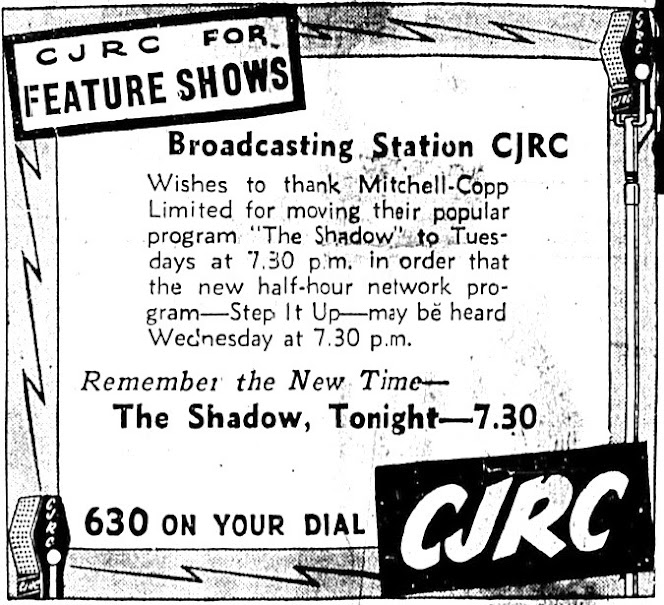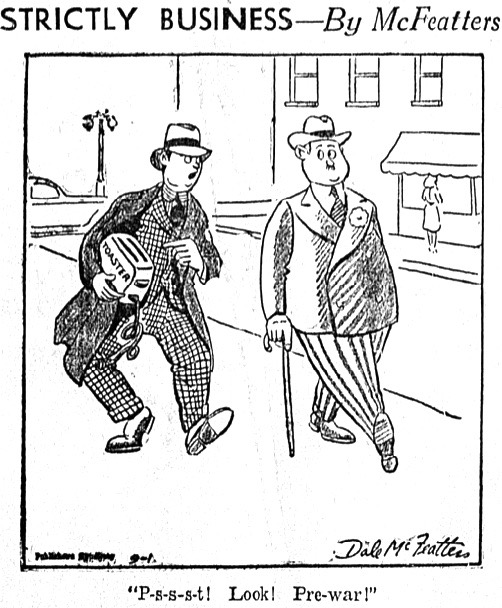Search Continues for More After-Effects of the Dieppe Raid
Photo as found in The Winnipeg Tribune, Sept. 1, 1942. "Such modern carriers*
make tank transport efficient." Photo Credit - N.E.A. (another avenue to search!)
Introduction:
*The photo above of 'modern' Landing Craft, Tanks (LCTs) is shared again below (a larger version w lengthier caption) along with 40+ other news clippings from The Trib as my search for more information related to the August 19, 1942 raid on Dieppe, and other nearby landing sites.
There are several links to news articles and photographs related to the raid on this site at this time as well as links to some of the books I have read on the topic. Another book - with more mention of the Dieppe Raid - shall be reviewed soon, by Peter Young, of 3 Commando.
First published in 1958. Above edition by Lionel Leventhal Ltd., 2002
Not only is the spotlight on actions that are 'post-Dieppe' but some can also be considered 'pre-operations in North Africa', i.e., Operation Torch, beginning two months hence. Canadians in Combined Operations would be deeply involved for the second time:
The four maps are not in the world's best condition but provide some reminder of the spread of the 'Axis Grip' and therefore the Allied goals:
Troubles in Ireland:
Three weeks after the Dieppe Raid, war correspondent R. Munro appears in Winnipeg. Got 25 cents?
Some of the casualties took part in 'the monster raid':
Some see the positive side of the Dieppe Raid:
If you don't have 25 cents to see Ross Munro and hear his stories, you can always tune in to "The Shadow" (now on Tuesdays)!
Good news for a change! Destruction on the Atlantic is decreasing and production is increasing:
Here's the BIG picture related to BIG Landing Craft :
Landing Craft, Tanks or LCTs (above) were apparently on PM Winston Churchill's mind when he spoke to Lord Louis Mountbatten (Chief of Combined Operations at the time of the Dieppe raid) about some of the PM's and War Department's important goals a year earlier, 1941. When Churchill and Mountbatten discussed plans about how many LCTs and other landing craft would be needed for the invasion of Europe and who was to man them, Canada's first volunteers for Combined Operations are mentioned.
"Obviously two of the most urgent problems were the provision of landing ships and craft, and the crews to man them... as an illustration of the magnitude of the crew problem, the Joint Planners, in the very month of Mountbatten's appointment, had persuaded the Chiefs of Staff that our requirements in LCTs alone for the eventual invasion would be 2,250 - a figure to daunt almost anybody. And where were the crews to come from? Canada made an offer, which was gratefully accepted, of 50 officers and 300 ratings, but this was a drop in the bucket."
By Bernard Fergusson (link to short book review), page 93
My father was part of the first draft, from Halifax, December 1941
Canadians in Combined Ops manned Landing Craft Infantry (Large),
aka LCI(L)s during D-Day Normandy in 1944
Most sailors here (HMCS Stadacona, Halifax) volunteered for the first draft
From photo collection of Doug Harrison (X), third from left in front row
And going back to the BIG picture once again, one can see bulldozers on the beach, and another book about Combined Operations provides an interesting reference to the usefulness of those machines during planned raids, and more:
One of the most important and dangerous duties (related to raids, and 'combined operations' involving the three military forces on land, sea and air) is that performed by the Beachmaster and his opposite number, the Military Landing Officer. They work as a team and their task is to control the beaches with the help of Assistant Beachmasters and Unit Landing Officers. They must see that the beach is clearly marked so that craft moving in later will not mistake it; they must discover and mark the best exits from it towards the country behind; they must attend to craft coming ashore, to the hauling away of vehicles which may have become stuck in the sand or shingle and to the re-floating of craft aground....
Perhaps we see a Beachmaster or Landing Officer, foreground (right). For certain
we see "the Bulldozer, a small tracked vehicle... invaluable" on the left.
.... For this and other purposes the Bulldozer, a small tracked vehicle with a movable steel shovel in front of it and tremendous pushing power, is invaluable. It is the Beachmasters who call in the boats to take off the men returning from a raid; while on the beaches they are, indeed, at once the constable on point duty and the foreman in charge of the delivery van.
From Combined Operations: The Official Story of the Commandos, pages 12 - 13
News clippings from The Winnipeg Tribune continue:
Here we see part of the price paid by Poland -
Hitler reminds people of his own view of the 'facts':
The newsreel that shares early photographs re the Dieppe Raid (see below) may be part of the collection we all have access to on YouTube (110 Canadian Army newsreels):
However, I have no link to 'Heart of the Rio Grande':
The writer Quentin Reynolds, mentioned in the first paragraph of the short piece (above) found on The Tribune's editorial page (page 6), went on to write a book about the Dieppe raid. He had a unique perspective, as he was attached to one of the communication or HQ ships that stood off shore as the raid took place:
And speaking about the Dieppe Raid...
Germany did have a plan in the hopper to attack England, Operation Sea Lion, but they did not have control of the air, as mentioned above. In fact, I recently purchased a book re the operation:
My last three purchases from Attic Books, London
Please click here to peruse more articles, many related to the Dieppe Raid - Research: Post-Dieppe, August 26 - 31, 1942 (Parts 1 - 5)
Unattributed Photos GH


















































No comments:
Post a Comment